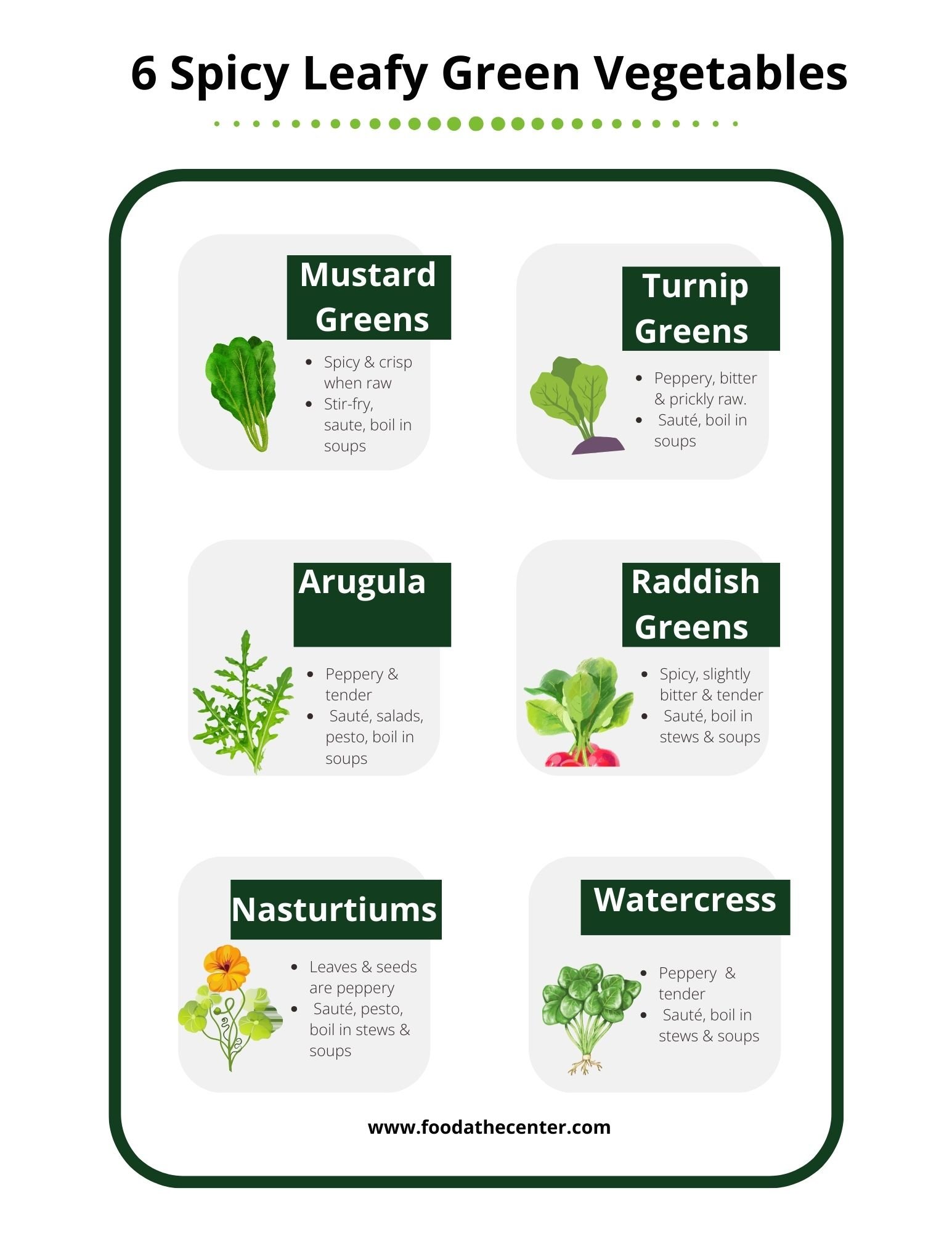6 Spicy Leafy Green Vegetables
by Michelle Beadle Holder, PhD
Spice Beyond Chilies
When most people think of spicy food, hot peppers or chilies are the first ingredients that come to mind. I know that has been the case for me. However, I have learned other ways to diversify my garden and plate with the peppery goodness of greens.
Below is a list of 6 spicy leafy vegetables to consider. I discovered most of these from growing my vegetables at the Elkhorn Community Garden in Columbia, MD.
1, Mustard Greens: are a popular vegetable in the American South, Asia, and Ethiopia. In the south, cooks often mix mustard greens with leafy vegetables like collard and turnip greens. I remember the first time I had mustard mixed with collard greens. It was love at first bite. The spicy flavor of mustard combined with the relatively mild and sweet taste of collards was like a chef's kiss. Growing mustard greens also add beauty to the garden. Plant the emerald green or purple colored leaves in the fall or spring. The leaves also can be found in different shapes and sizes.
2. Turnip Greens: I only discovered the complex flavor profile of turnip this year. As a child, I watched my mom cook turnip roots in soups in our Jamaican kitchen. Back then, I was not a fan of turnips. The cooked turnip roots were too mild and flavorless for me. However, it was not until I had turnip leaves raw that I discovered the slightly peppery-bitter taste. Turnip greens are often thrown away in favor of the roots in Jamaica, so you can only imagine how delighted I was to learn that the raw leaves are edible. Turnip greens are delicious raw, boiled, stir-fried, sautéd, or steamed. I also love to add turnip greens to smoothies. As mentioned above, they are great to mix with other greens.
3. Radish Greens: Like turnips, most people are familiar with the pink, red, or white roots of radishes. The slightly peppery roots of radishes are often chopped up and added to salads. However, as a gardener, I have learned to save and prepare the leaves for dinner. Sauté radish greens like you would spinach. Radish leaves are also tasty in soups. The leaves also get more peppery while they grow during hot spring days.
4. Arugula: The leaves of arugula are popular in Italian cuisine. It is also perhaps the most accessible spicy leafy green vegetable on this list. You can find arugula next to lettuce, spinach, kale, and collards in most supermarkets. Though most often enjoyed in salads, arugula can add flavor to the top of pizzas, in plates of pasta, and between the slices of bread in sandwiches. Mature arugula leaves tend to be more spicy, while the baby leaves tend to be mild.
5. Nasturtiums: While often grown for its beautiful flowers, the entire nasturtium plant is edible. The flowers, leaves, and tiny seeds add a unique touch of flavor to the plate. For example, the mature leaves have a peppery kick, while the baby leaves are milder in taste. Some have even used the seeds of nasturtiums like one would capers.
6. Watercress: Popular in some Asian cuisines, cress is also known as pepper grass (because of the taste) or watercress (because of how it is grown). There are multiple ways to savor watercress. Add watercress to eggs (boiled or as an omelet), soups, stews, salads, and sandwiches. You could even add watercress to make a dip or marinade. Watercress also pairs well with cheese, tomatoes, potatoes, and mushrooms. Watercress is the only vegetable I have no experience growing. Have you ever grown watercress?
The next time you think of adding a bit of spice to your plate, consider spicy green vegetables. Perhaps you have already. If so, are any of these vegetables already part of your diet or enjoyed in your culture?
Note: a version of this article was first published in the 2023 Fall edition of the Columbia Gardeners, Green Thumb Newsletter.

